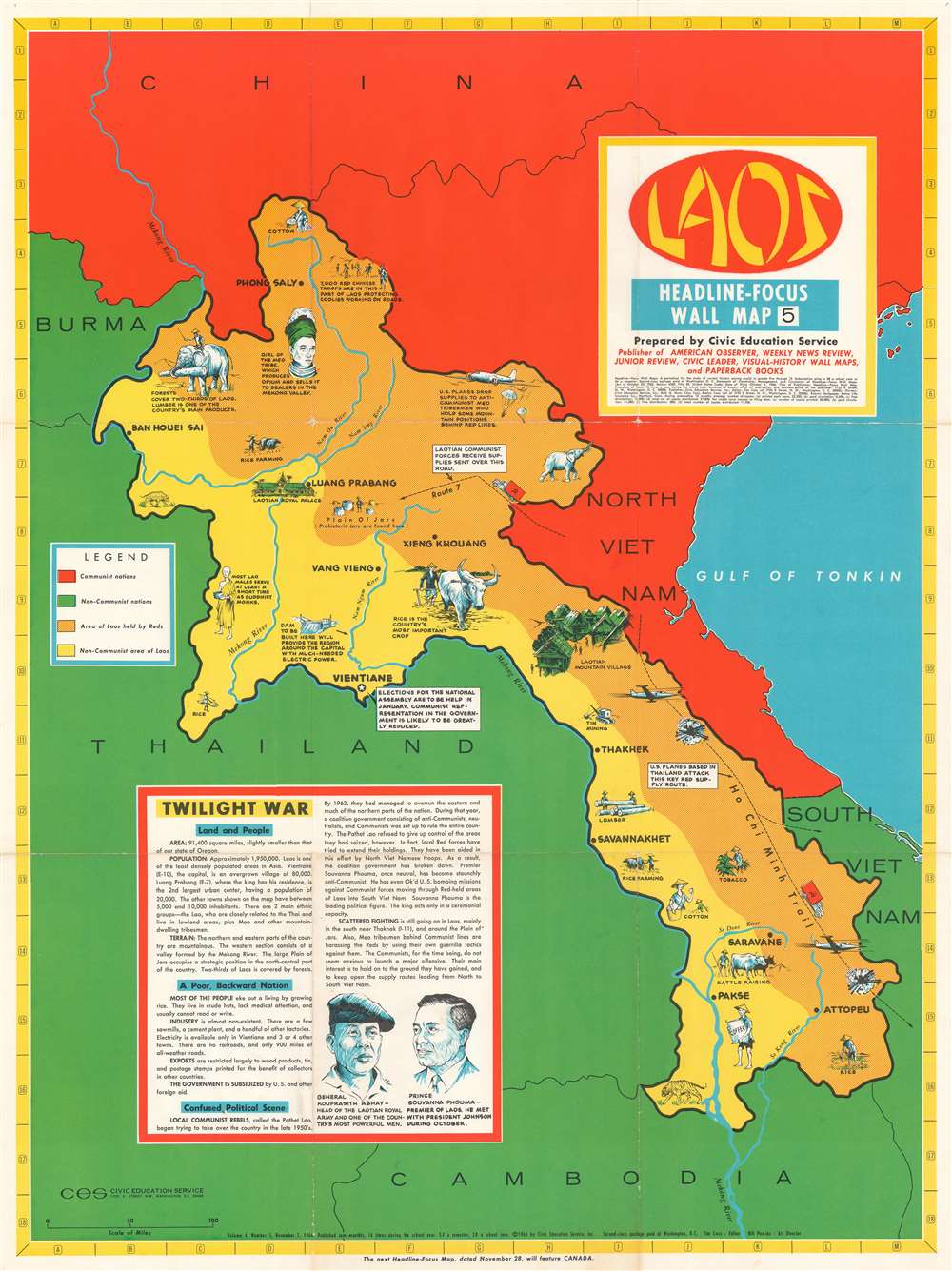This item has been sold, but you can get on the Waitlist to be notified if another example becomes available, or purchase a digital scan.
1966 Civic Education Service Pictorial Map of Laos During the Vietnam War
Laos-civiceducation-1966
Title
1966 (dated) 36.25 x 27.25 in (92.075 x 69.215 cm) 1 : 1300000
Description
The Laotian Civil War and the Vietnam War
This map was created at the height of the Laotian Civil War, which raged from 1959 - 1975, and was fought between the Communist Pathet Lao and the Royal Lao Government. The Laotian Civil War became a part of the Vietnam War and what is known as a proxy war between the Cold War powers, which means that not only were the opposing Laotian forces fighting each other but troops of the North Vietnamese Army, U.S. troops, Thai, and South Vietnamese forces were also involved. Most of the Ho Chi Minh Trail, a key logistical artery for the North Vietnamese to infiltrate men and supplies into South Vietnam from North Vietnam during the Vietnam War, traversed most of the length of Laos before entering South Vietnam. Communist Pathet Lao forces emerged victories at the end of the war in 1975, with up to 300,000 people fleeing Laos into Thailand after their takeover.Ho Chi Minh Trail
The Ho Chi Minh Trail served both the Viet Minh during the First Indochina War and the Viet Cong during the Vietnam War. Mainly a supply route, the Ho Chi Minh Trail is considered to be 'one of the great achievements of military engineering of the 20th century' by the United States National Security Agency. The Trail proved to be an incredible military accomplishment, considering that it was the site of the single most intense bombing campaign in history, with bombs dropping on average every seven minutes.Publication History and Census
This map was created and published by Civic Education Service in 1966. There are no examples recorded in the OCLC and no evidence of it entering the private market.Cartographer
The Civic Education Service (fl. c. 1939 - 1945, 1963 - 1972) was a publishing firm based in Washington, D.C. that produced maps and other visual material for academic purposes. Our research has led us to believe that an organization known as the Civic Education Service existed from c. 1939 - c. 1945 (during World War II) and from c. 1963 - c. 1972. We have been unable to determine if this is the same organization that was closed for almost twenty years, or if the organization that published maps and other educational materials in the 1960s and 1970s was unrelated to the Civic Education Service that published books, maps, and other materials during World War II. More by this mapmaker...

